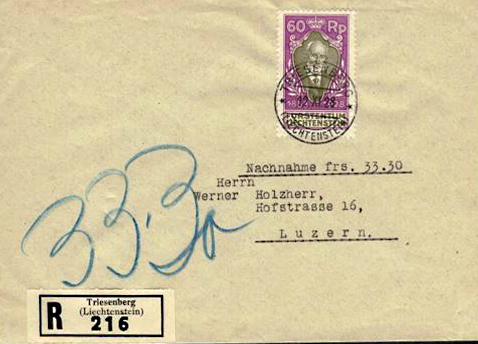 Today’s cover of the month is a registered COD letter from Triesenberg (LI) to Lucerne. The letter is franked with a 60 Rp stamp from 1928. The special thing about it is not the amount of 33,30 sFr but that it was postmarked on the day of issue of this stamp, thus representing a first-day cover.
Today’s cover of the month is a registered COD letter from Triesenberg (LI) to Lucerne. The letter is franked with a 60 Rp stamp from 1928. The special thing about it is not the amount of 33,30 sFr but that it was postmarked on the day of issue of this stamp, thus representing a first-day cover.
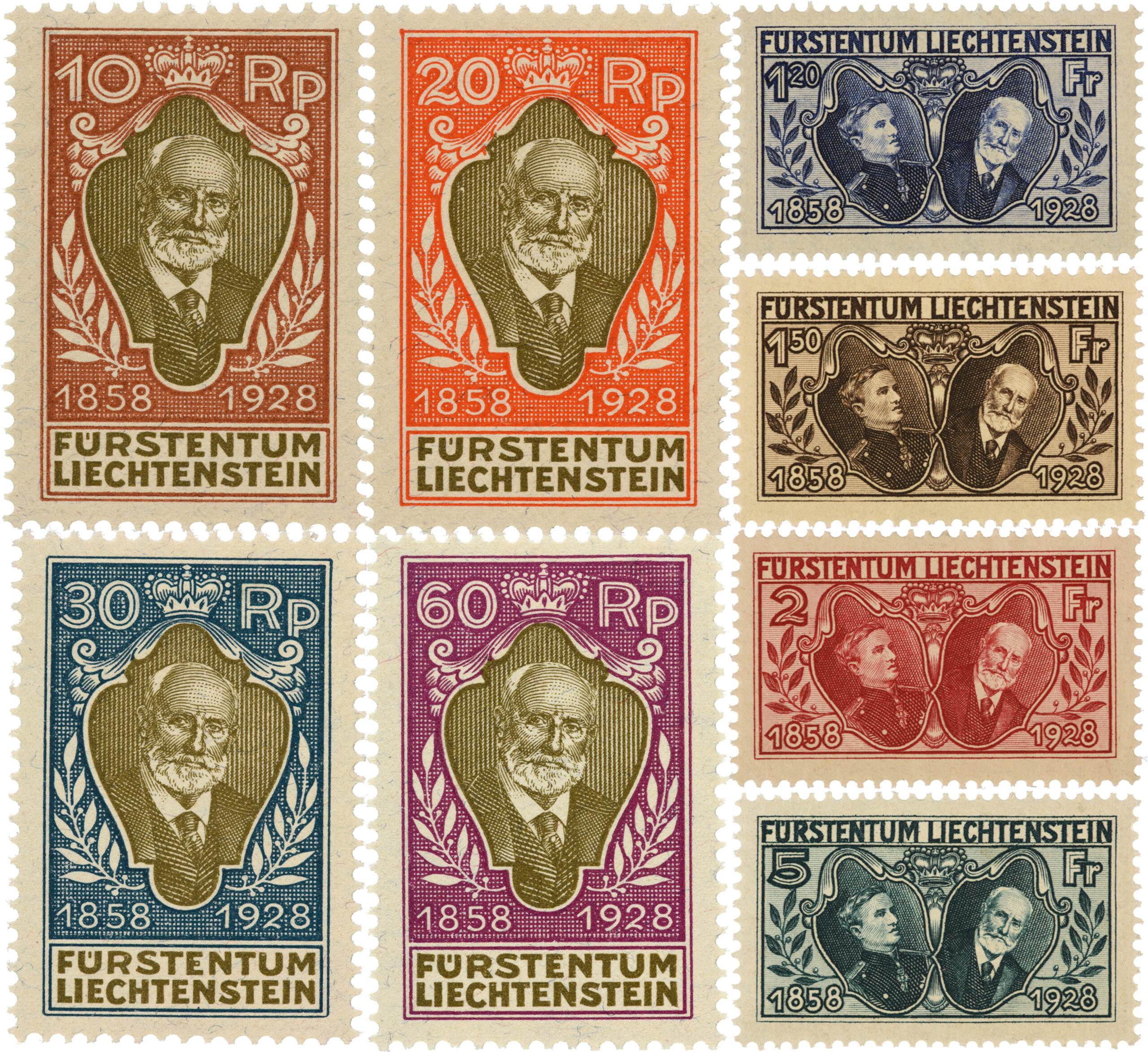 The set of stamps to which this stamp belonged was issued on the occasion of the 70th anniversary of the accession of Prince John II to the throne on November 12, 1858. It is part of a set of 8 stamps. These stamps were designed by Eugen Verling (1891-1968) – Vaduz (FL), St. Gallen (CH), the centime stamps in letterpress, the franc stamps in intaglio. The stamps were valid for 1 year until 12.11.1929.
The set of stamps to which this stamp belonged was issued on the occasion of the 70th anniversary of the accession of Prince John II to the throne on November 12, 1858. It is part of a set of 8 stamps. These stamps were designed by Eugen Verling (1891-1968) – Vaduz (FL), St. Gallen (CH), the centime stamps in letterpress, the franc stamps in intaglio. The stamps were valid for 1 year until 12.11.1929.
Background to the cover:
Prince Johann II took over the government when he was 18 years old in 1858. He completed studies at the University of Bonn (1859) and in Brussels and Paris (1860). His educator and traveling companion was the social reformer Karl Freiherr von Vogelsang, who had a lasting influence on his philanthropic attitude to social and humanitarian issues. During this time, his mother ran the affairs of state, from which he took them over in 1860 (except for the times of his travels). He gave Liechtenstein a constitution in 1862, and in 1921 the constitution still in force today on a parliamentary-democratic basis – even if he did not push the latter of his own accord.
His reign saw fundamental reforms:
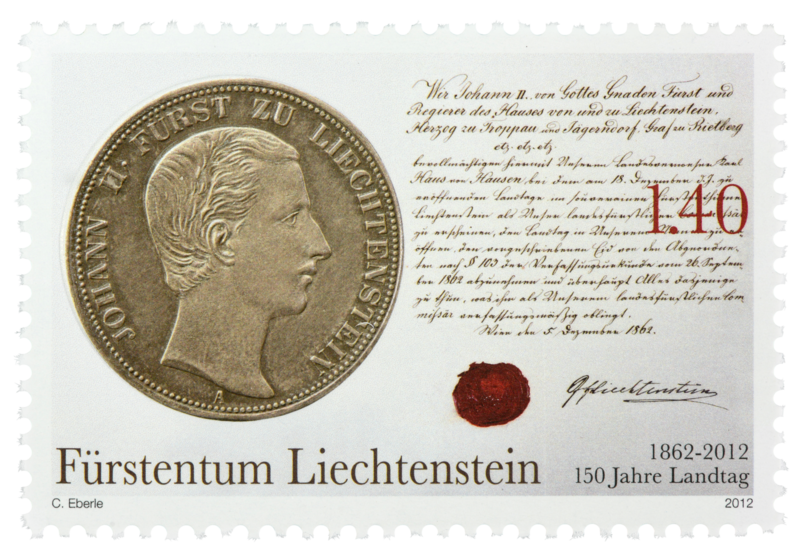 1859 of the school system, currency and criminal law,
1859 of the school system, currency and criminal law,- 1864 of the municipal administration,
- 1865 of the trade code and tax legislation, and 1869 of the poor relief system.
- 1868 Abolition of compulsory military service
- 1911 Liechtenstein concluded a postal treaty with Austria
- 1920 one with Switzerland
- 1923 a customs union treaty with Switzerland, and
- 1924 the adoption of the Swiss franc currency
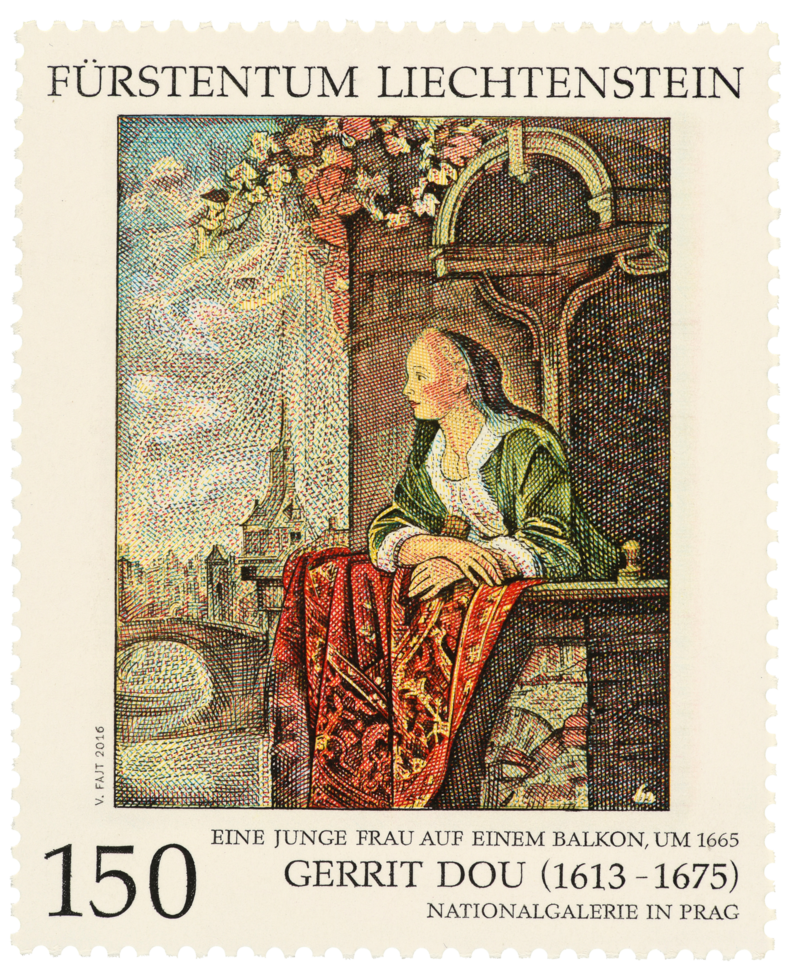
Painting by Gerrit Dou (1613-1675), donated by Prince Johann II of Liechtenstein to predecessor of today’s Czech National Gallery
The latter “reforms” favored Liechtenstein’s economic development after World War 1. In addition, Johann II was one of the most important collectors and patrons of the arts of his time. He also subsidized various medical and historical researches and was actively involved in the renovation and construction of castles, palaces and churches.
Because of his enormous social generosity and his commitment to the modernization of Liechtenstein, he was popularly nicknamed “the Good”, although he also had to put up with criticism for rarely allowing himself to be seen in Liechtenstein.
However, his tendency not to take a stand on political issues became more and more apparent during his later reign. For example, he was quite passive on the issue of expropriation measures through the land reform in Czechoslovakia, in the course of which the House of Liechtenstein lost about 50% of its total property.
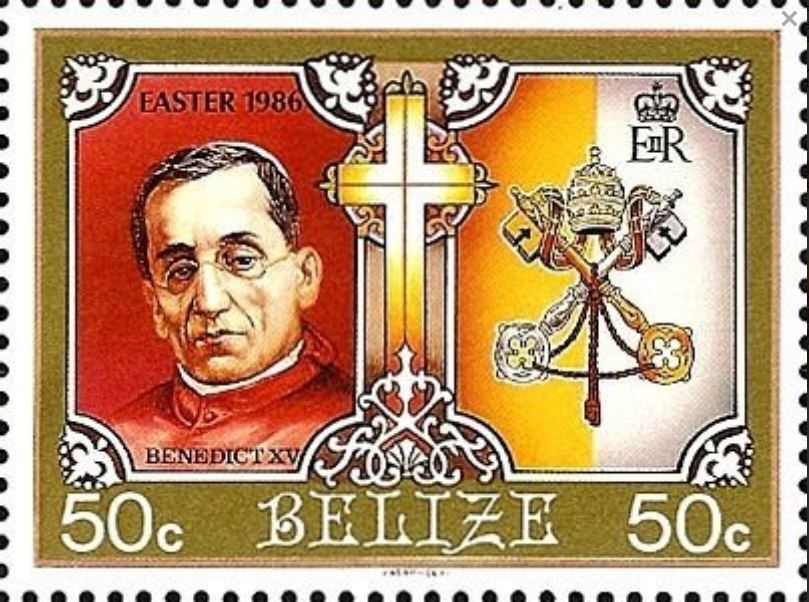
Bendedict XV sought a state for himself in 1916
The passivity, however, became particularly clear in the question of the possible takeover of Liechtenstein by the Holy Chair in 1916. As a deeply religious person, he apparently had no problems with giving the Principality of Liechtenstein to the Holy Father as a Papal State. This was only prevented by the refusal of his brother Franz (the later Prince Franz I, since Johann II himself remained unmarried and childless), who vehemently opposed the donation.
